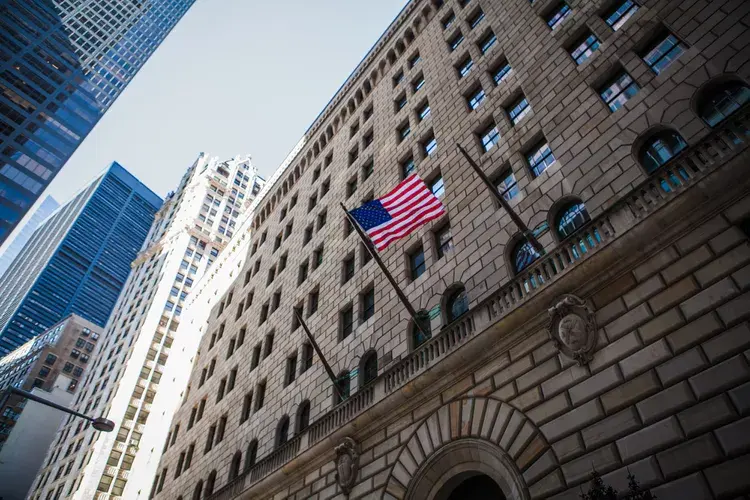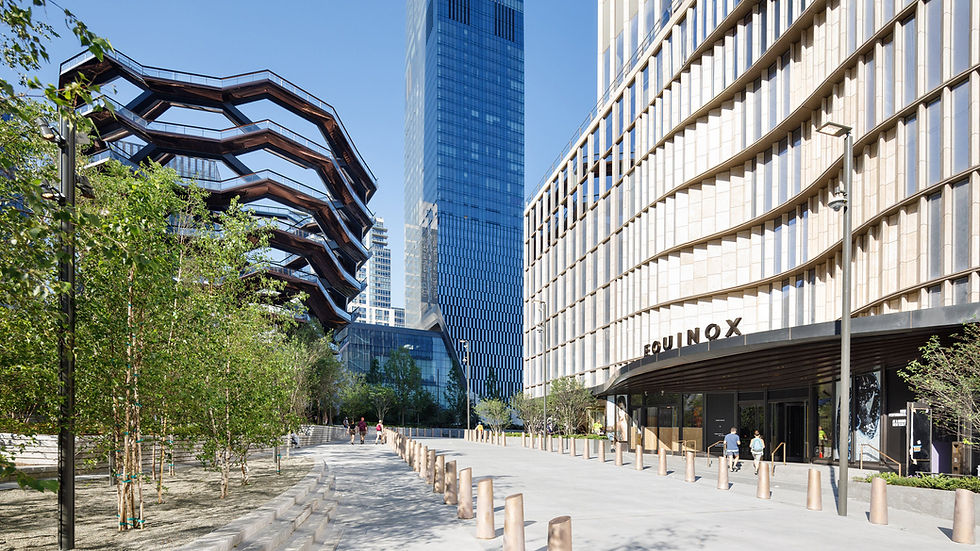Weekly Market Report - October 6, 2022
- Norman Bobrow

- Oct 6, 2022
- 4 min read
***
As those who got used to working from home refuse to return five days a week — and businesses shed the expensive Manhattan footprints giving every employee a desk — the value of America’s costliest real estate is likely to crater. That means that commercial property tax collections, which account for a fifth of all municipal revenue, may soon crater, too. New York has two choices: Wait for massive fiscal growing pains, or adapt now, minimizing the agony. Adapting now means rethinking zoning. There’s no good reason that in a modern city, buildings are so rigidly categorized into classes, with minimal flexibility between light industrial, commercial, residential, medical and other. A nimbler New York would end unnecessary distinctions to let people find the best uses for space with minimal regulatory hurdles.
Second, adapting now means budgeting smartly. Profligate spending that piles ever more recurring spending into the city’s $101 billion-and-growing fiscal plan risks throwing New York off a cliff if and when property receipts revenue plunges (personal income and related tax revenue is already expected to fall sharply this year). Building up reserves and responsibly dialing back bureaucracy are the wisest insurance policies against sudden downward shifts — especially if those coincide with a recession. Third, adapting now means rethinking property tax collections, which have become unfair and incomprehensible over generations. Not only must New York rationalize levies on rentals, condos, coops and single-family homes; it must accept that golden-goose employers whose taxes have defrayed those from residences might not lay eggs forever.
Fourth, adapting now means more sensitively implementing statutes that inflict huge costs on commercial real estate, like the law that will soon start punishing non compliant buildings with big fines. That’s likely to accelerate a commercial exodus. None of this precludes Mayor Adams and Gov. Hochul jawboning to bring more people back to the office. Let them try, but understand that an ounce of preparation is worth many pounds of hot air.
***
SL Green’s unexpected, 100% acquisition of the 48-story, 1.8 million square-foot office tower climaxed a grueling battle with the tower’s distressed former owner HNA, an affiliate of China’s PWM Property Management. The tower’s lenders agreed to maintain in-place $1.2 billion of fixed-rate term indebtedness on mostly the original terms – key to a complex agreement SL Green made with a slew of lenders and creditors who were eager to bring the asset under competent stewardship following years of turmoil. The deal gives SL Green total control of the property, which “continues to be subject to the in-place mortgage and mezzanine loans totaling $1.768 billion, which mature in June 2027.
The 1967-vintage tower stands on the east side of the avenue between East 46th and 47th streets, diagonally opposite the rising new JP Morgan headquarters tower.
HNA bought 245 Park for $2.2 billion in 2017 and SL Green bought a $148 million preferred-equity stake in 2018. The landlords were soon at war as HNA inexplicably placed 245 Park in bankruptcy despite a positive cash flow, and ousted SLG as its management company. In May, an arbitrator ruled that HNA must pay SL Green $185 million for its actions. In July, a court reinforced the judgment which SL Green will act to enforce. Buoyed by a revitalized Park Avenue-area leasing market, publicly traded SL Green, which developed One Vanderbilt, is on an East Side roll. It’s a joint-venture partner with Vornado in 280 Park Ave. and recently bought 450 Park Ave. for $455 million.
It is meanwhile re-developing One Madison Avenue where IBM signed a huge lease. Last week, it sold more than half of the Lipstick Building’s office floors to Memorial Sloan-Kettering for about $300 million. The building is currently just over 70% leased to tenants including Societe Generale Americas, Houlihan Loukey and Angelo Gordon & Co.SL Green leasing director Steven Durels said that roughly 500,000 square feet would roll by the end of 2023. Floor plates of 70,000 square feet in the podium and 37,000 square feet on higher floors are ideally suited to financial firms. No outside leasing agent has been chosen yet.
***
New York City saw the highest absolute occupancy level (89.9%), which was helped by the High-Level Week of the United Nations General Assembly.
***
The Related Companies announced this earlier week its plans to team up with casino giant Wynn Resorts to bid for one of three downstate casino licenses. The proposal to build a casino at the Hudson Yards development on Manhattan’s west side has its advantages. There’s plenty of room to build it on the currently undeveloped western portion of the site. The developer, chaired by billionaire Stephen Ross, has significant clout. The hard part could be to win over local elected officials. State lawmakers in April approved a plan to award three casino licenses in the downstate area. Other interested bidders are reportedly eyeing the Times Square area and the area near Citi Field, among other locations.
Another leading contender is Resorts World, which currently operates a so-called racino at Aqueduct Racetrack in Queens, which features slot machines and video lottery machines but no table games. But bidders must win approval from four of the six members of a community advisory committee. That committee will comprise representatives of the mayor, governor and local elected officials. With Hudson Yards, that would include Assemblyman Richard Gottfried, who said in an interview Friday Gottfried is retiring at the end of the year, so any decision-making would likely fall to his successor. But others also have concerns. Manhattan Borough President Mark Levine, who would also have a say on the advisory committee, is keeping an open mind.
Mayor Eric Adams did not weigh in on the Hudson Yards proposal this week, but a spokesman said, “The gaming commission will decide on where these casinos will be located, but we are hoping two of the three downstate casinos will be placed in New York City.” The Hudson Yards casino would also have to go through the city’s arduous land-use process — another layer of approvals that would test the political influence of Ross, a major donor to Gov. Kathy Hochul and others.









Comments